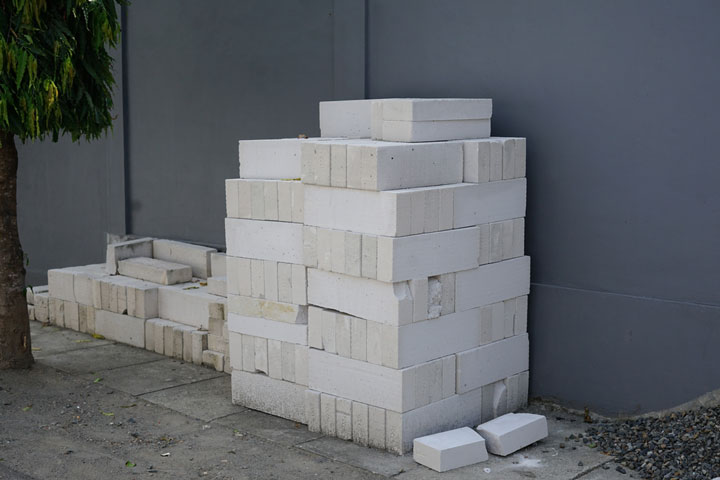AAC blocks and panels are made from autoclaved aerated concrete which is a lightweight and durable variant of concrete. Though AAC blocks were invented and patented way back in the 1920s, their use in construction activities is a recent phenomenon. Blocks and panels made from AAC provide various advantages such as high load bearing capacity, durability, etc. Experts predict a massive surge in the demand and usage of these materials in the post-pandemic period.
Princy A. J |
September 28, 2022

The construction industry was one of the worst hit sectors during the Covid-19 pandemic. However, in the post-pandemic period, the sector has experienced a V-shaped recovery owing to the growth in demand for residential and commercial spaces across the globe. Apart from the growth in demand, one main factor behind the V-shaped recovery is use of innovative methodologies and budget-friendly, energy-efficient, and durable construction materials for construction. AAC blocks and panels is an example of such affordable and sturdy construction raw materials.
Unique Features of AAC Blocks and Panels
AAC, i.e., autoclaved aerated concrete is a light-weight variant of concrete which possesses high load-bearing capacity and is a certified all weather building material. Blocks and panels made out of autoclaved aerated concrete are known as AAC blocks and panels. Though, invented in the 1920s by a Swedish architect, AAC blocks and panels have gained traction in the recent few decades. In 1978, AAC became popular as a perfect alternative to traditional construction concrete, but it was in 2012, when AAC was started to use extensively in construction activities throughout the world, especially in developed and developing economies like US, China, India, Singapore, Australia, etc. Experts predict a growth in the use of these materials, and hence a surge in the AAC blocks and panels market in the post-pandemic period.
Autoclaved aerated concrete is made from aggregates of Portland cement, quartz sand, lime, calcined gypsum, water, and aluminum powder. This unique mix of ingredients provides AAC with thermal insulation properties, high load bearing strength, and at the same time, it is extremely light-weight. Blocks and bricks made from AAC are around 8-9 times bigger than traditional red clay bricks but are 3 times lighter than their traditional counterparts.
Advantages of AAC Blocks and Panels
- Lightweight
As seen earlier, despite being larger in size, AAC blocks weigh much less than clay bricks. Hence blocks and panels made from AAC are easier to transport and require less labor for transporting same amount of clay bricks. One of the most important advantages of being a lightweight substitute for clay bricks is that the overall dead load of the building reduces substantially and this helps in developing taller construction sites efficiently and without any risk of collapse.
- Eco-friendly and Sustainable
The ingredients used to make AAC blocks and panels such as fly ash are made from recycling of industrial waste. Also, almost all ingredients of AAC are non-toxic; hence surface run-off during construction doesn’t cause water pollution. Additionally, these materials are extremely energy efficient as the blocks and panels made from AAC are porous in nature which inadvertently reduces the heating and air conditioning costs. All in all, using AAC materials results in developing sustainable and environment-friendly construction sites.
- Pest-Resistance and Fire-Resistant
Blocks and panels made from AAC are pest-free in that they reduce rat and termite infestations as these blocks are made from inorganic materials. Also, the maintenance required for AAC blocks and panels is much less as compared to wooden counterparts. All these facets help in keeping your homes clean and hygienic. Also, since autoclaved aerated concrete is an excellent insulator, residential spaces made using AAC blocks and panels provide perfect temperatures to the house. AAC, moreover, has the capacity to sustain temperatures up to 1200 degrees-Celsius which helps to protect the house or office from fires.
The Bottom Line
AAC blocks and panels, due to the various advantages they provide, are now being widely used in countries across the globe. Also, as the number of skyscrapers across the globe increases, AAC is bound to become a vital raw material for construction activities. This is due to the fact that high-rise buildings built using AAC materials require less steel for structural integrity. Thus, the popularity, demand, and usage of AAC blocks and panels is sure to grow in the coming period.


